Related Research Articles

Gustavo Adolfo Claudio Domínguez Bastida, better known as Gustavo Adolfo Bécquer, was a Spanish Romantic poet and writer, also a playwright, literary columnist, and talented in drawing. Today, some consider him one of the most important figures in Spanish literature, and is considered by some as the most read writer after Miguel de Cervantes. He adopted the alias of Bécquer as his brother Valeriano Bécquer, a painter, had done earlier. He was associated with the romanticism and post-romanticism movements and wrote while realism enjoyed success in Spain. He was moderately well-known during his life, but it was after his death that most of his works were published. His best-known works are the Rhymes and the Legends, usually published together as Rimas y leyendas. These poems and tales are essential to studying Spanish literature and common reading for high-school students in Spanish-speaking countries.
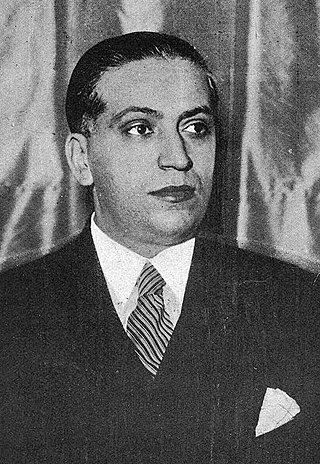
José Calvo Sotelo, 1st Duke of Calvo Sotelo, GE was a Spanish jurist and politician. He was the minister of finance during the dictatorship of Miguel Primo de Rivera and a leading figure during the Spanish Second Republic. During this period. he became an important part of Spanish Renovation, a monarchist movement. Calvo Sotelo's assassination in July 1936 by the bodyguard of PSOE party leader Indalecio Prieto was an immediate prelude to the triggering of the Spanish military coup of July 1936 that was plotted since February 1936, the partial failure of which marked the beginning of the Spanish Civil War.

Vincenzio Carduccio was an Italian painter who spent his career in Spain.
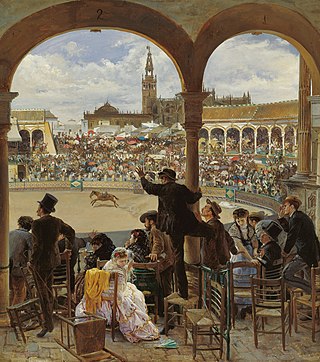
Costumbrismo is the literary or pictorial interpretation of local everyday life, mannerisms, and customs, primarily in the Hispanic scene, and particularly in the 19th century. Costumbrismo is related both to artistic realism and to Romanticism, sharing the Romantic interest in expression as against simple representation and the romantic and realist focus on precise representation of particular times and places, rather than of humanity in the abstract. It is often satiric and even moralizing, but unlike mainstream realism does not usually offer or even imply any particular analysis of the society it depicts. When not satiric, its approach to quaint folkloric detail often has a romanticizing aspect.
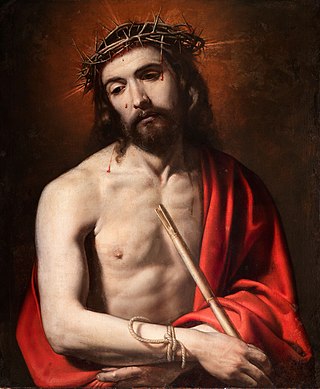
Antonio Fernández Arias was a Spanish painter of the Baroque period.

Simón de León Leal (1610–1687) was a Spanish painter of the Baroque period. He was born in Madrid to Diego de León Leal and Juana de Durán. He was a pupil of Pedro de Las Cuevas. He was known for both portraits and history paintings.

José Leonardo, known also as Jusepe Leonardo (1601–1652), was a Spanish painter of the Baroque period, active during his maturity in the royal court in Madrid.
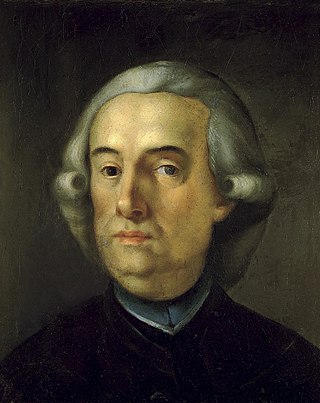
Antonio Ponz Piquer was a Spanish painter.
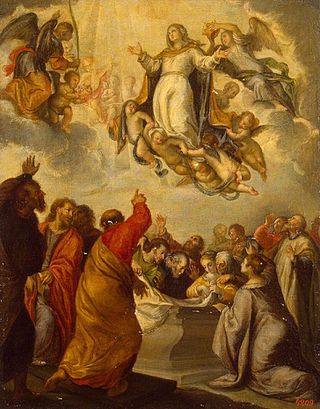
Francisco Camilo was a Spanish painter, the son of an Italian immigrant who had settled in Madrid. When his father died, his mother remarried, and Camilo became the stepson of the painter Pedro de las Cuevas.
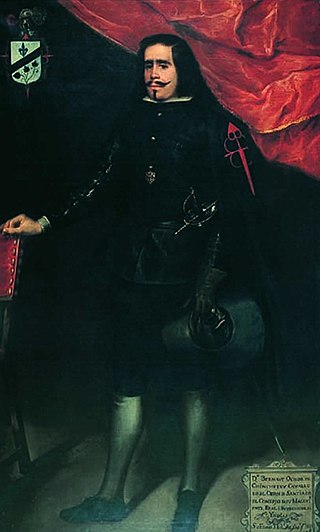
Juan de Alfaro y Gámez (1643–1680) was a Spanish painter of the Baroque. He was born at Córdoba. He was first a pupil of Antonio del Castillo, but finished his studies at Madrid under Velázquez, whose manner he followed, particularly in portraits. He was employed by Velazquez in copying the works of Titian, Rubens, and Van Dyck. In the church of the Carmelites is an Incarnation and in the church of the Imperial College at Madrid is his picture of the Guardian Angel.

Antonio de Pereda y Salgado was a Spanish Baroque-era painter, best known for his still lifes.

Argentina has a rich history of different types of art. Throughout the centuries it has changed, and finally became what it is today.
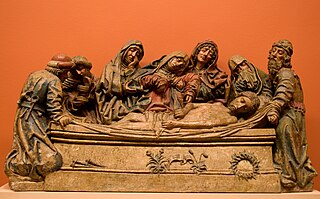
The Sevillian school of sculpture—the tradition of Christian religious sculpture in Seville, Andalusia, Spain—began in the 13th century, formed a clear tradition of its own in the 16th century, and continues into the present. The sculptures are generally worked in wood in a technique known as encarnación.

Francisco Antolínez de Sarabia (1645–1700) was a historical and landscape painter who studied in the school of Murillo, whose style and manner of colouring he followed.

Pedro Atanasio Bocanegra was a Spanish painter, born at Granada.
Antonio Castrejon (1625–1690) was a Spanish painter.

Juan García de Miranda (1677–1749), was a Spanish painter of the baroque period, a disciple of Juan Delgado and the uncle of Pedro Rodríguez de Miranda. He was appointed Painter to the King.
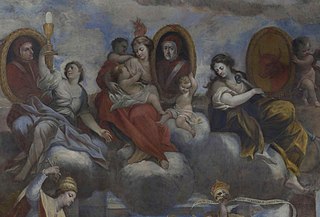
Gaspar de la Huerta (1645–1714) was a Spanish artist born at Campillo de Altobuey in Cuenca.

Blas de Prado, or Del Prado, was a Spanish painter, who was born in the vicinity of Toledo, about 1540, and was a scholar of Alonso Berruguete. There are some of his works in the chapel of St. Blas at Toledo, but they are much injured by time and the dampness of the situation. At Madrid there are also some pictures by this artist, particularly an altar-piece in the church of San Pedro, representing the 'Descent from the Cross,' which is evidently the work of a great master. In the early part of his life Prado was invited to visit the court of the Emperor of Morocco, to paint a portrait of his daughter, and returned to Spain amply rewarded for his labour. Whilst at Fez he painted the portraits of the Princesses of the Harem. He died at Madrid about 1600.

Traditionalism is a Spanish political doctrine formulated in the early 19th century and developed until today. It understands politics as implementing Catholic social teaching and the social kingship of Jesus Christ, with Catholicism as the state religion and Catholic religious criteria regulating public morality and every legal aspect of Spain. In practical terms it advocates a loosely organized monarchy combined with strong royal powers, with some checks and balances provided by organicist representation, and with society structured on a corporative basis. Traditionalism is an ultra-reactionary doctrine; it rejects concepts such as democracy, human rights, constitution, universal suffrage, sovereignty of the people, division of powers, religious liberty, freedom of speech, equality of individuals, and parliamentarism. The doctrine was adopted as the theoretical platform of the Carlist socio-political movement, though it appeared also in a non-Carlist incarnation. Traditionalism has never exercised major influence among the Spanish governmental strata, yet periodically it was capable of mass mobilization and at times partially filtered into the ruling practice.
References
 This article incorporates text from a publication now in the public domain : Bryan, Michael (1886). "De las Cuevas, Pedro". In Graves, Robert Edmund (ed.). Bryan's Dictionary of Painters and Engravers (A–K). Vol. I (3rd ed.). London: George Bell & Sons.
This article incorporates text from a publication now in the public domain : Bryan, Michael (1886). "De las Cuevas, Pedro". In Graves, Robert Edmund (ed.). Bryan's Dictionary of Painters and Engravers (A–K). Vol. I (3rd ed.). London: George Bell & Sons.